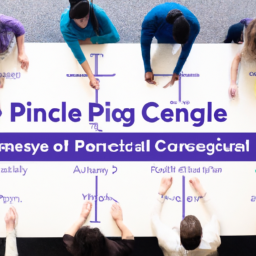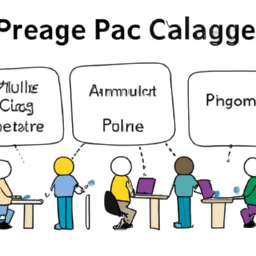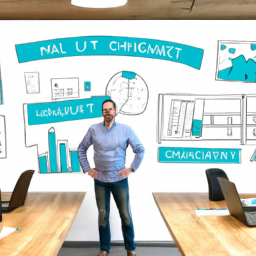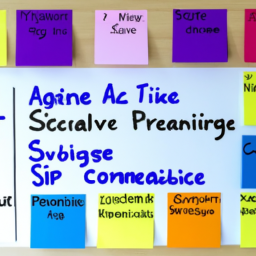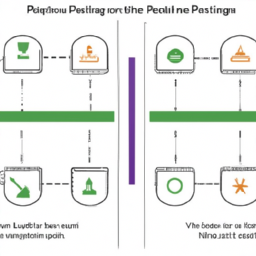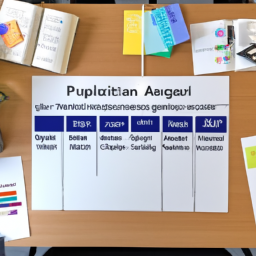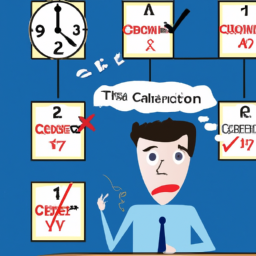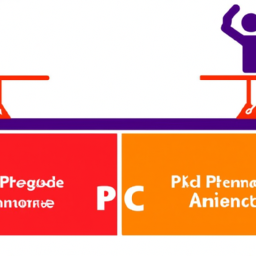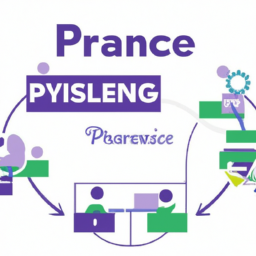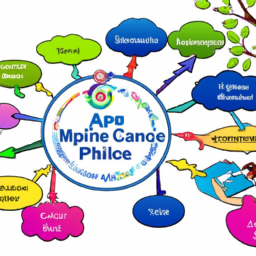Are you ready to uncover the shocking truth about PRINCE2 Agile?
Brace yourself for a revealing journey into the origins, principles, and real-life examples of this highly acclaimed project management methodology.
In this article, we will examine the benefits and limitations of PRINCE2 Agile, debunk common misconceptions, and ultimately answer the burning question: is it overrated?
Prepare to have your beliefs challenged as we dive deep into the objective, analytical, and authoritative investigation of PRINCE2 Agile.
Key Takeaways
- PRINCE2 Agile combines PRINCE2 and agile methodologies.
- Understanding key principles of PRINCE2 Agile is essential.
- PRINCE2 Agile aims to incorporate strengths of both approaches.
- There is a need for a shift in mindset when implementing PRINCE2 Agile.
The Origins and Purpose of PRINCE2 Agile
The Origins and Purpose of PRINCE2 Agile can be traced back to the need for a project management framework that combines the best of both PRINCE2 and agile methodologies.
PRINCE2, an established project management method, has been widely used for many years. However, with the evolution of technology and the increasing demand for flexibility and adaptability in project management, the effectiveness of PRINCE2 alone started to be questioned.
Agile methodologies, on the other hand, are known for their ability to deliver projects in a flexible and iterative manner.
The combination of PRINCE2 and agile methodologies resulted in the creation of PRINCE2 Agile, aiming to provide a solution that incorporates the strengths of both approaches.
Understanding the key principles of PRINCE2 Agile is essential to fully grasp its potential and determine whether it lives up to its reputation.
Understanding the Key Principles of PRINCE2 Agile
To fully grasp the essence of PRINCE2 Agile, you need to understand its key principles. Here are the four key principles of PRINCE2 Agile:
-
Focus on Business Justification: PRINCE2 Agile emphasizes the importance of continuously assessing the business justification for the project. This ensures that the project remains aligned with the organization’s goals and objectives.
-
Collaboration: PRINCE2 Agile promotes collaboration and effective communication among team members. This allows for better decision-making and problem-solving throughout the project.
-
Flexibility: PRINCE2 Agile recognizes that project requirements can change, and it provides a flexible approach to adapt to these changes. This allows for incremental delivery and continuous improvement.
-
Iterative and Incremental Delivery: PRINCE2 Agile encourages delivering the project in small, manageable increments. This allows for early feedback and ensures that the project remains on track.
Examining the Benefits and Limitations of PRINCE2 Agile
Take a moment to consider the benefits and limitations of PRINCE2 Agile. PRINCE2 Agile combines the flexibility of Agile with the structure of PRINCE2, offering a framework that can be tailored to fit various project types. Its advantages include improved project control, increased collaboration, and faster delivery of products. However, there are also challenges associated with implementing PRINCE2 Agile. One challenge is the need for a shift in mindset, as Agile requires a more adaptive and iterative approach compared to traditional project management methods. Another challenge is the complexity of integrating Agile practices within the PRINCE2 framework. To illustrate this further, let’s examine the benefits and limitations of PRINCE2 Agile in a table:
| Advantages | Challenges |
|---|---|
| Improved project control | Shifting mindset |
| Increased collaboration | Complexity of integration |
| Faster delivery of products |
It is important to understand these benefits and limitations before considering real-life examples of PRINCE2 Agile implementation.
Real-Life Examples of PRINCE2 Agile Implementation
Consider some real-life examples where PRINCE2 Agile has been successfully implemented. Here are four case studies that demonstrate the best practices of PRINCE2 Agile:
-
Company A: By adopting PRINCE2 Agile, Company A improved their project management processes. This resulted in increased productivity and better collaboration among teams. They successfully delivered their projects on time and within budget by incorporating agile principles into their traditional PRINCE2 framework.
-
Organization B: With the implementation of PRINCE2 Agile, Organization B achieved better adaptability and responsiveness to changing requirements. They embraced agile practices and saw significant improvements in their project delivery, leading to higher customer satisfaction.
-
Government Agency C: By combining PRINCE2 and agile methodologies, Government Agency C successfully managed complex projects with multiple stakeholders. They effectively controlled risks and achieved better project outcomes by leveraging the strengths of both approaches.
-
Start-up D: Start-up D utilized PRINCE2 Agile to streamline their project management processes and achieve faster time-to-market. They were able to quickly adapt to changing market conditions and deliver high-quality products by embracing agile techniques within the PRINCE2 framework.
These real-life examples demonstrate the successful implementation of PRINCE2 Agile, showcasing the benefits and best practices of this approach.
Debunking Common Misconceptions About PRINCE2 Agile
One common misconception about PRINCE2 Agile is that it is not suitable for large-scale projects. However, this is far from the truth.
While PRINCE2 Agile was initially developed for smaller, more flexible projects, it has since evolved to address the challenges faced in adopting agile methodologies in larger projects. PRINCE2 Agile combines the best of both worlds, providing a structured framework while embracing agile principles.
It offers a tailored approach that allows organizations to scale agile practices to meet the needs of their projects, regardless of size. By integrating PRINCE2’s project management principles with agile methodologies, organizations can effectively manage risks, ensure stakeholder engagement, and deliver high-quality results in large-scale projects.
Frequently Asked Questions
What Are the Key Differences Between PRINCE2 Agile and Traditional PRINCE2 Methodology?
The key differences between PRINCE2 Agile and traditional PRINCE2 methodology lie in their approach and mindset.
PRINCE2 Agile combines the flexibility and adaptability of agile methods with the structure and governance of PRINCE2. This fusion allows for iterative development, continuous feedback, and collaboration among stakeholders.
The advantage of PRINCE2 Agile is that it enables organizations to deliver projects more efficiently and effectively by embracing change, managing risks, and maximizing business value.
How Does PRINCE2 Agile Address the Challenges of Project Management in an Agile Environment?
Addressing the challenges of project management in an agile environment, PRINCE2 Agile offers numerous benefits. By combining the flexibility of agile with the structure of PRINCE2, it provides a framework that supports effective project delivery.
This approach allows for iterative and incremental development, enhancing adaptability and responsiveness. Additionally, PRINCE2 Agile incorporates techniques such as timeboxing and prioritization, enabling better management of changing requirements.
With its emphasis on collaboration and continuous improvement, PRINCE2 Agile is a valuable tool for navigating the complexities of agile project management.
Can PRINCE2 Agile Be Used in Industries Other Than IT and Software Development?
PRINCE2 Agile can definitely be used in industries other than IT and software development. Its flexible and adaptable approach to project management can be applied to various sectors. By combining the best practices of PRINCE2 and Agile, it provides a structured framework that allows organizations to effectively manage projects in a dynamic and ever-changing environment.
The benefits of using PRINCE2 Agile in project management include improved collaboration, increased project visibility, and the ability to deliver high-quality results on time and within budget.
Are There Any Specific Roles or Responsibilities That Need to Be Defined for Successful Implementation of PRINCE2 Agile?
When implementing PRINCE2 Agile, it’s crucial to define specific roles and responsibilities. This ensures that everyone knows their tasks and contributes effectively to the project’s success.
By clearly delineating roles, such as the Agile Coach or the Product Owner, you can overcome obstacles and foster collaboration among team members.
Defining these roles ensures a streamlined and efficient implementation of PRINCE2 Agile, leading to improved project outcomes.
What Are Some Common Obstacles or Difficulties Faced When Adopting PRINCE2 Agile, and How Can They Be Overcome?
When adopting PRINCE2 Agile, you may encounter common obstacles and difficulties. These challenges can include resistance to change, lack of stakeholder buy-in, and difficulties in integrating PRINCE2 and Agile methodologies.
However, there are strategies to overcome these hurdles. Effective change management, clear communication, and providing training and support to the team can help in overcoming resistance.
Engaging stakeholders early in the process and aligning PRINCE2 and Agile principles can also facilitate a successful implementation.
Conclusion
In conclusion, PRINCE2 Agile may not be the holy grail of project management methodologies that some claim it to be. While it does offer a unique blend of PRINCE2 principles with agile practices, its limitations and challenges cannot be ignored.
However, it would be unfair to dismiss PRINCE2 Agile entirely. As with any tool, its effectiveness depends on how it is implemented and tailored to suit the specific project and organization.
Ultimately, it is up to the project managers and stakeholders to weigh the pros and cons and determine if PRINCE2 Agile is the right fit for their needs. After all, there is no one-size-fits-all solution in the ever-evolving world of project management.



